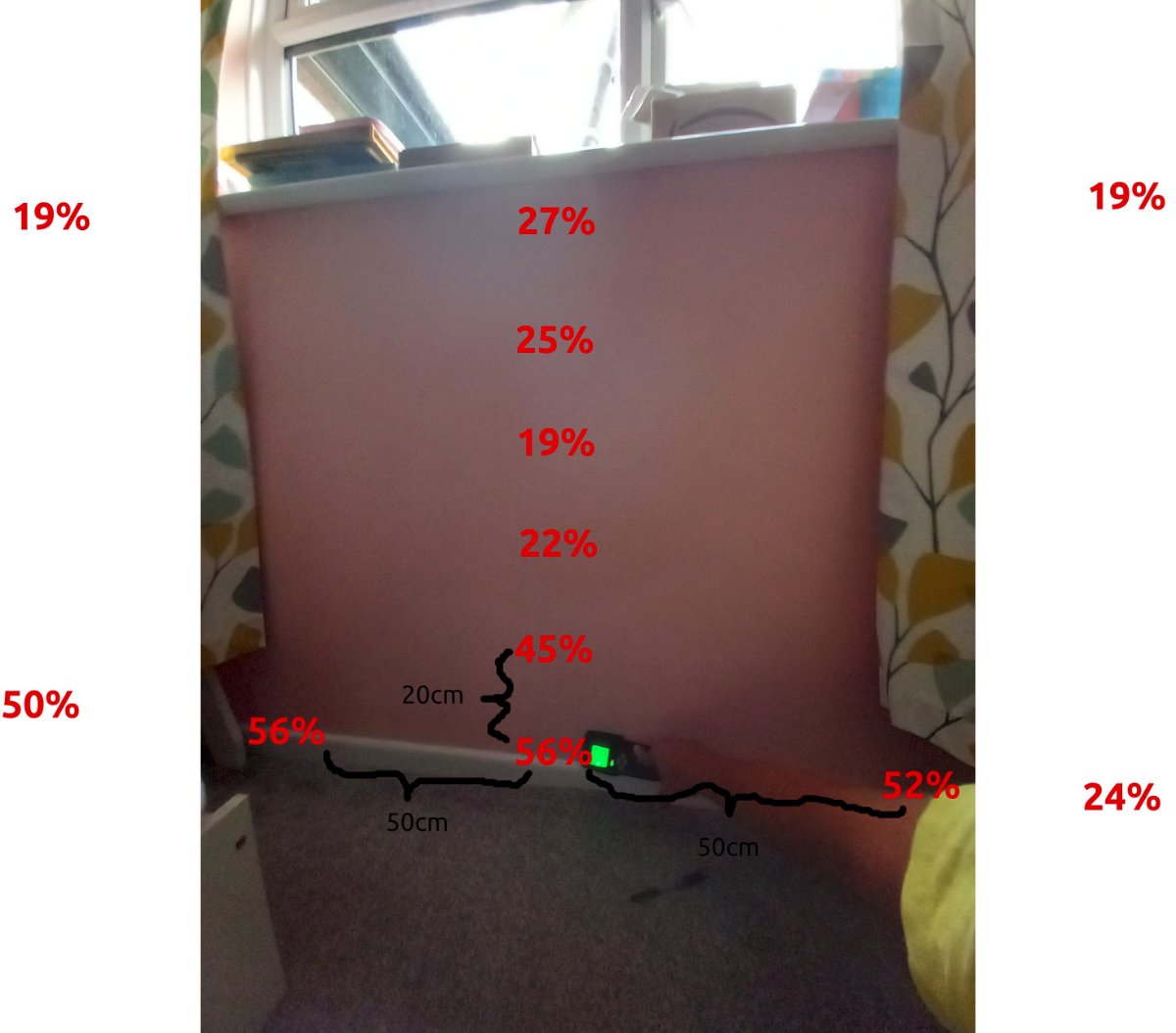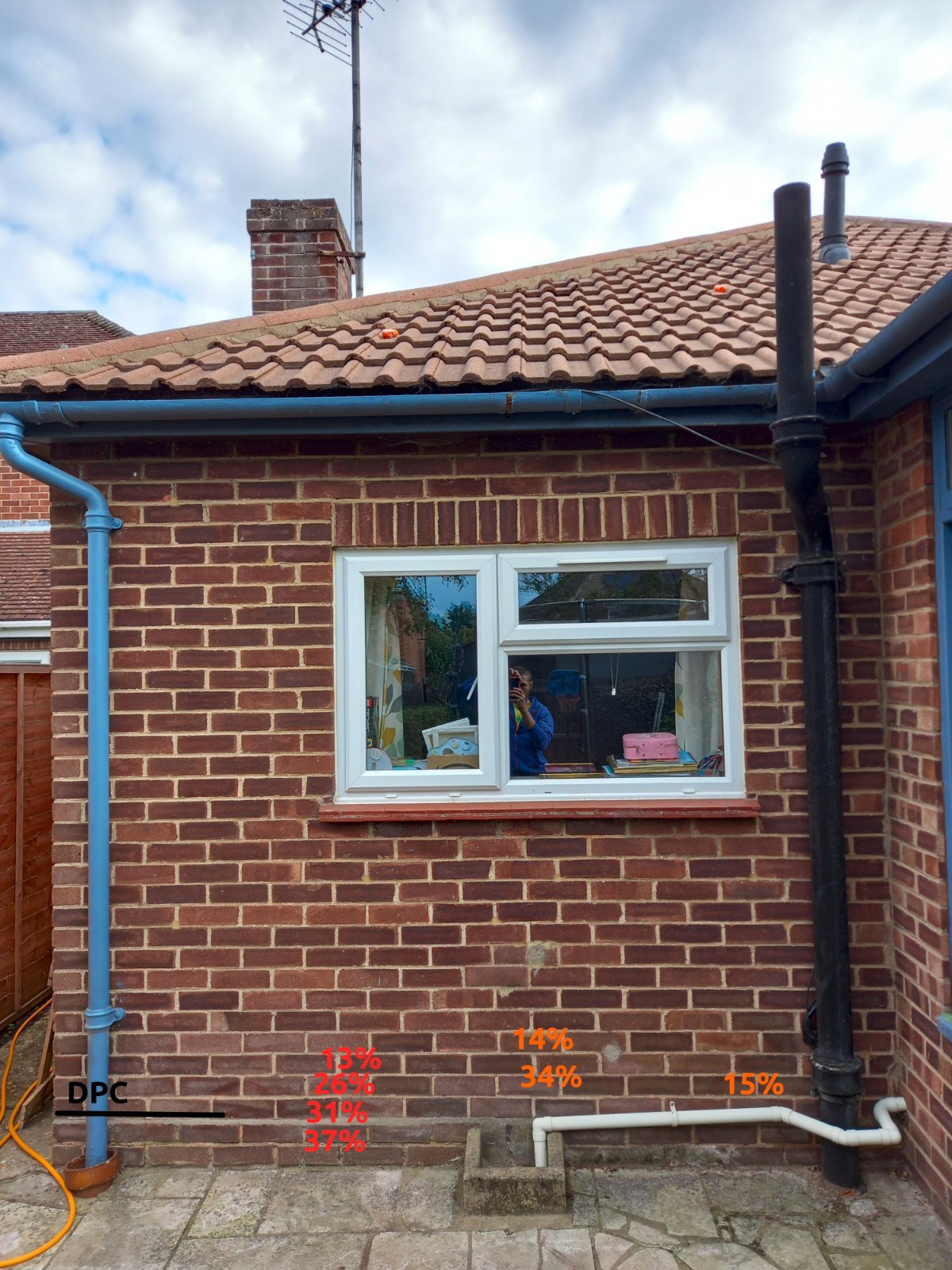Hi All,
I moved into a new house and bought a device to measure moisture level of the walls and all the walls around the house are good except just one.
 with_damp_inside.jpg (116.02 KiB) Not viewed yet
with_damp_inside.jpg (116.02 KiB) Not viewed yet

In the middle point I am getting moisture level of almost 56%. I went up every 20cm and moisture level goes down and then up again to 27%.
Also from the bottom middle point I went right by 50cm and moisture level was still 52% but then I went another 50cm and moisture level went down to 24%.
I did the same going left but moisture level was not changing at the bottom.
Both right and left but at the height of 120cm moisture level is at normal level that is 19%.
Then I decided to go outside to see how moisture level is and here is a photo how it looks like outside:
 with_damp_outside.jpg (383 KiB) Not viewed yet
with_damp_outside.jpg (383 KiB) Not viewed yet
At the middle point 2 bricks above DPC moisture level is 34% but 4 bricks above DPC is 14%.
I tested 50cm left one brick below and above DPC and moisture level was 37% and 31%
Also testing 50cm right 2 bricks above DPC and moisture level was 15%.
1) I wonder what could cause internal wall to be damp? Can it be caused by waste water pipe outside of it?
2) Also why inside wall is more wet than outside?
3) Why outside bricks above DPC are wet? I thoght DPC is supposed to protect them.
4) Any suggestions how to fix wet wall?
Also note that this was a kitchen once and got converted to a bedroom.
I moved into a new house and bought a device to measure moisture level of the walls and all the walls around the house are good except just one.

In the middle point I am getting moisture level of almost 56%. I went up every 20cm and moisture level goes down and then up again to 27%.
Also from the bottom middle point I went right by 50cm and moisture level was still 52% but then I went another 50cm and moisture level went down to 24%.
I did the same going left but moisture level was not changing at the bottom.
Both right and left but at the height of 120cm moisture level is at normal level that is 19%.
Then I decided to go outside to see how moisture level is and here is a photo how it looks like outside:
At the middle point 2 bricks above DPC moisture level is 34% but 4 bricks above DPC is 14%.
I tested 50cm left one brick below and above DPC and moisture level was 37% and 31%
Also testing 50cm right 2 bricks above DPC and moisture level was 15%.
1) I wonder what could cause internal wall to be damp? Can it be caused by waste water pipe outside of it?
2) Also why inside wall is more wet than outside?
3) Why outside bricks above DPC are wet? I thoght DPC is supposed to protect them.
4) Any suggestions how to fix wet wall?
Also note that this was a kitchen once and got converted to a bedroom.

